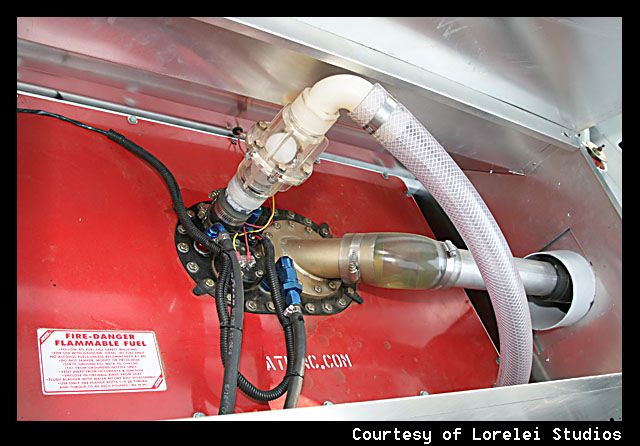Back in the dark ages, the fuel cell for enduros couldn't be larger than 10% bigger than stock capacity. That made our B Opel about a 13 gal max. Unless you're planning to sprint the enduro, figure out how much you'll need to run the car for as long as you want your driver shifts to be, then get that size cell. I guess the reason to run the max size cell would be if you weren't going to add fuel at each driver change. Most of the supps require a minimum of 90-120 second stops if you add fuel. If you can change drivers and tires etc in less than that, then running the big cell may be worth it. Carrying the extra weight may not be. We used to do an easy 2 hours on a cell full. My wife and I ran the 12 hr at Summit doing 3 hour shifts, it worked, but the cell had to be FULL!
Starting in '96, we ran the enduros with essentially the identical set-up that Kirk pictured. Not cheap but worth it! Competitors back then did a little griping. We still have it if anyone is interested in buying it.



